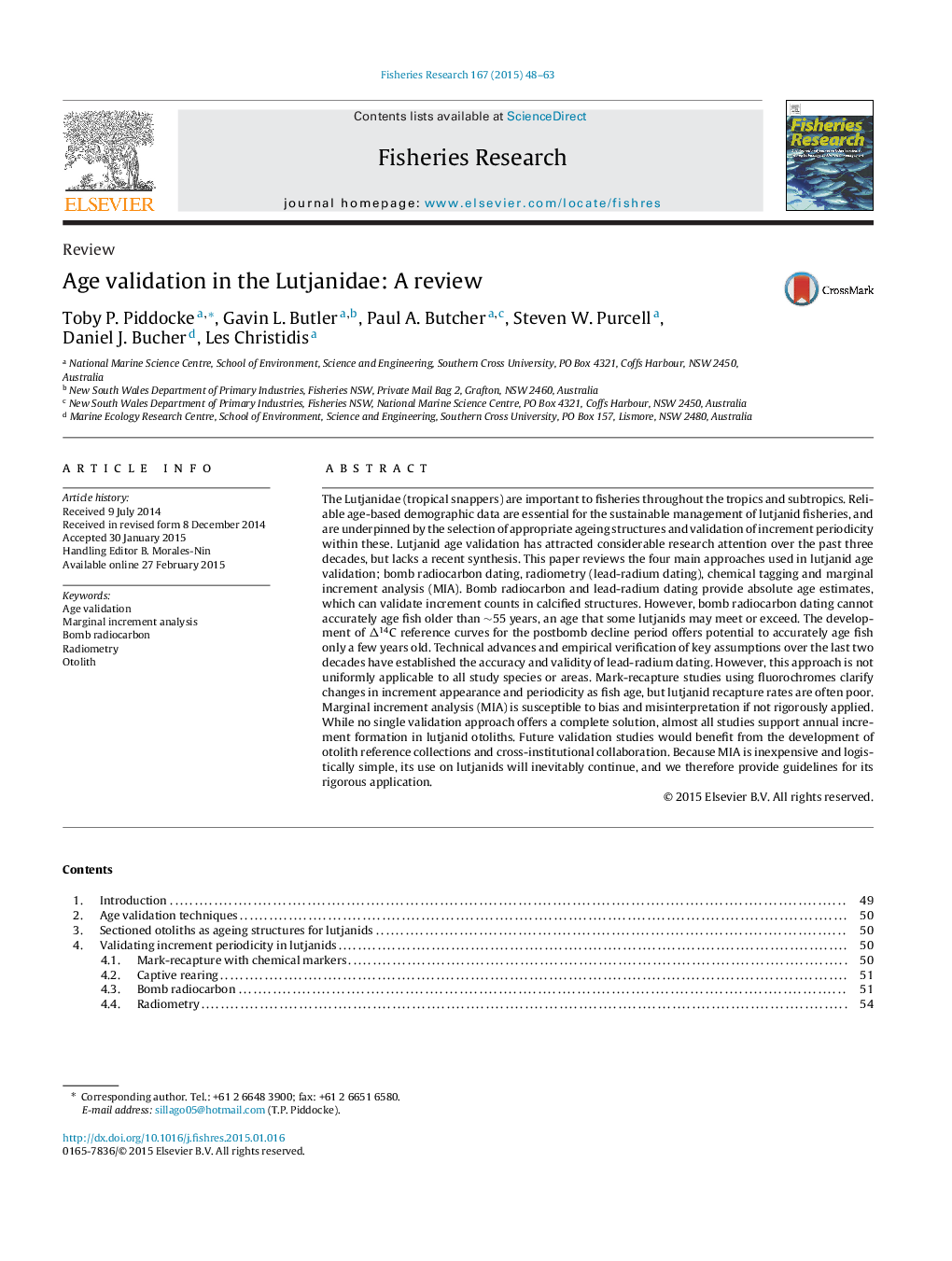| کد مقاله | کد نشریه | سال انتشار | مقاله انگلیسی | نسخه تمام متن |
|---|---|---|---|---|
| 4542890 | 1626801 | 2015 | 16 صفحه PDF | دانلود رایگان |

• Lutjanids exemplify many age validation issues common to tropical fish generally.
• Lutjanid longevities may exceed the temporal capacities of bomb radiocarbon dating.
• Post-bomb Δ14C reference curves may allow bomb radiocarbon dating of young fish.
• Radiometric ageing has good potential for long-lived lutjanids.
• We critique studies using marginal increment analysis and suggest improvements.
The Lutjanidae (tropical snappers) are important to fisheries throughout the tropics and subtropics. Reliable age-based demographic data are essential for the sustainable management of lutjanid fisheries, and are underpinned by the selection of appropriate ageing structures and validation of increment periodicity within these. Lutjanid age validation has attracted considerable research attention over the past three decades, but lacks a recent synthesis. This paper reviews the four main approaches used in lutjanid age validation; bomb radiocarbon dating, radiometry (lead-radium dating), chemical tagging and marginal increment analysis (MIA). Bomb radiocarbon and lead-radium dating provide absolute age estimates, which can validate increment counts in calcified structures. However, bomb radiocarbon dating cannot accurately age fish older than ∼55 years, an age that some lutjanids may meet or exceed. The development of Δ14C reference curves for the postbomb decline period offers potential to accurately age fish only a few years old. Technical advances and empirical verification of key assumptions over the last two decades have established the accuracy and validity of lead-radium dating. However, this approach is not uniformly applicable to all study species or areas. Mark-recapture studies using fluorochromes clarify changes in increment appearance and periodicity as fish age, but lutjanid recapture rates are often poor. Marginal increment analysis (MIA) is susceptible to bias and misinterpretation if not rigorously applied. While no single validation approach offers a complete solution, almost all studies support annual increment formation in lutjanid otoliths. Future validation studies would benefit from the development of otolith reference collections and cross-institutional collaboration. Because MIA is inexpensive and logistically simple, its use on lutjanids will inevitably continue, and we therefore provide guidelines for its rigorous application.
Journal: Fisheries Research - Volume 167, July 2015, Pages 48–63